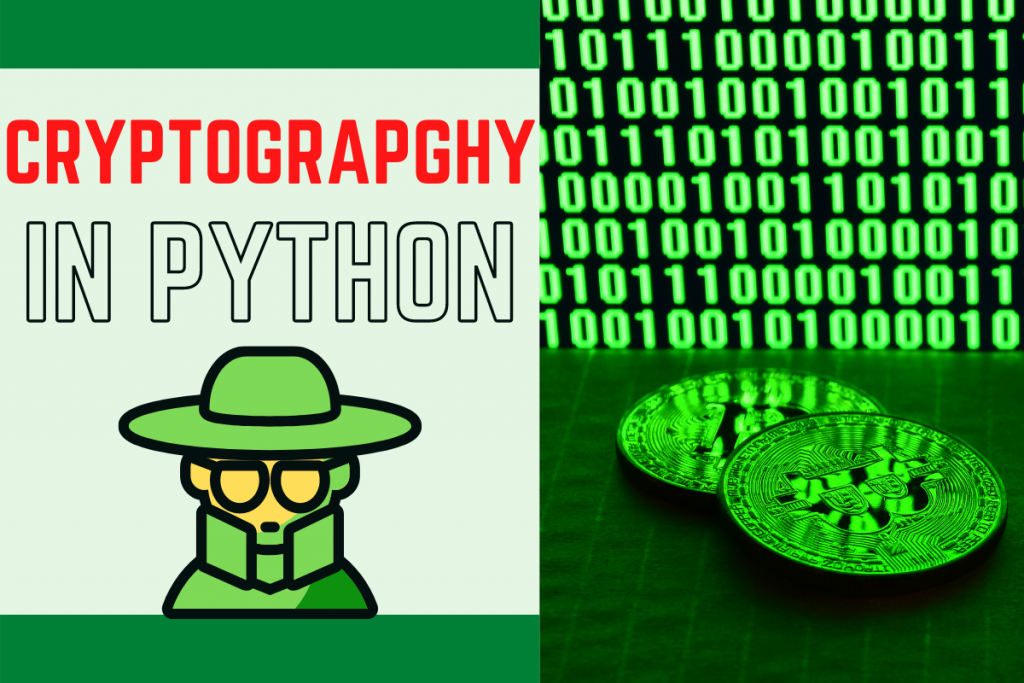In an age where digital security is paramount, understanding the intricate world of cryptography is no longer a luxury; it is a necessity. Cryptography, the art of encoding and decoding information to protect data from unauthorized access, holds the potential to transform not only how we safeguard communications but also how we perceive privacy itself. For those eager to embark on their journey in this fascinating field, particularly with the versatile programming language Python, the possibilities are boundless. This exploration aims to elucidate the foundational knowledge and resources needed to delve into cryptography with Python effectively.
The inception of cryptographic techniques dates back centuries, morphing from simple ciphers, like the Caesar cipher, to complex algorithms such as AES (Advanced Encryption Standard) and RSA (Rivest-Shamir-Adleman). Mastering these concepts demands a shift in perspective; viewing encryption not merely as a technical requirement but as a pivotal strategy in conserving the sanctity of personal and confidential information. Cryptography serves as a bulwark against threats in our interconnected digital landscape, making it indispensable for programmers, security analysts, and anyone vested in data integrity.
To commence your voyage into cryptography with Python, it is essential first to understand the core principles that underpin the discipline. Familiarize yourself with fundamental concepts such as symmetric and asymmetric key encryption, hashing, and digital signatures. Symmetric encryption involves a single key used for both encryption and decryption, whereas asymmetric encryption employs a pair of keys: a public key, retrievable by anyone, and a private key, known solely to the owner. Understanding these principles is critical as they lay the groundwork for more advanced topics.
Equipped with this foundational knowledge, the next step is to harness the capabilities of Python. Python is celebrated for its simplicity and extensive libraries, making it an excellent language for cryptographic applications. The PyCryptodome library is one of the most widely used in the Python ecosystem for cryptography. It provides a myriad of cryptographic recipes, allowing you to implement secure and efficient encryption methodologies.
Initially, experiment with basic cryptographic algorithms. Start by utilizing symmetric encryption techniques. For instance, implement AES encryption by following these steps:
- Install PyCryptodome using pip.
- Generate a secure random key.
- Create a cipher object.
- Implement encryption and decryption functions.
This rudimentary exercise not only introduces you to practical coding applications but also provides insight into how encryption works in real time. As you become more comfortable, challenge yourself with asymmetric encryption techniques using the RSA algorithm, which grants a greater understanding of key management and secure communication protocols.
Moreover, it is pivotal to comprehend the nuances of hashing functions, a cornerstone of cryptographic practices. Hashing functions convert data into a fixed-length string of characters, which uniquely represents that data. Consider implementing the SHA-256 hash function to examine how it ensures data integrity. Through a simple Python script, you can hash a message, enabling you to validate its integrity by comparing the hash against the original data. This exercise emphasizes the importance of data validation and authenticity in cryptographic practices.
As you delve deeper into cryptography with Python, consider exploring topics such as digital signatures and public key infrastructures (PKI). Digital signatures employ asymmetric cryptography to validate the authenticity of a message or a document, ensuring non-repudiation. Implementing digital signatures in Python can be a rewarding and enlightening experience, showcasing how cryptographic principles are applied in real-world scenarios, such as software distribution and e-commerce.
On that note, participating in cryptography-related challenges and exercises on platforms like Hackerrank or LeetCode can further sharpen your skills. Engaging with a community of like-minded individuals provides opportunities for collaboration, peer review, and exposure to differing approaches and methodologies. This enhancement of your skills through practical application proves crucial as the cryptographic landscape continues evolving.
Furthermore, it is prudent to stay informed about emerging cryptographic trends and technologies. With the advent of quantum computing on the horizon, researchers are urging the development of quantum-resistant algorithms, pondering how classical cryptographic techniques may falter against quantum attacks. Engaging with scholarly articles and attending cryptography conferences can augment your knowledge and position you at the forefront of this dynamic field.
Finally, as you amass knowledge and practical experience, consider contributing to open-source projects or creating your encryption libraries. Such undertakings offer profound insights into code organization, version control, and community engagement. They also help solidify your understanding of cryptographic protocols while fostering a spirit of collaboration within the programming community.
In conclusion, embarking on a journey to master cryptography with Python not only equips individuals with essential skills for navigating today’s digital landscape but also instills an enduring curiosity about the underlying mechanisms of data security. By building a solid foundation through systematic study, practical exercises, and community engagement, one can cultivate a proficiency that empowers them to contribute to the evolving field of cryptography. As the boundaries of technology expand, stay vigilant in your learning and innovative in your applications, for the realm of cryptography holds a promise that extends beyond mere protection—into the safeguarding of privacy and trust in the digital age.








Leave a Comment